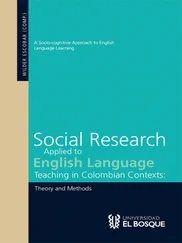Did you notice a difference between the PRESENT SIMPLE and the PAST
SIMPLE?
Present simple
Past simple
I buy
I bought
she buys
she bought
not ‘she boughts’
We don’t add -sfor he/ shein the past simple, only in the present simple!
Exercise 3
Complete these sentences by writing the verbs in the past simple –
the first one has been done for you.
1 Sandra brokeher leg last week.
(break)
2 James ______ off a ladder yesterday.
(fall)
3 That man _______ my wallet!
(steal)
4 I ________ yesterday but no one ______ .
(phone) (answer)
5 Suzie _______ last night.
(call)
6 I _______ my bag at the office.
(leave)
7 She ______ to me at the end of the meeting. (speak) 8 Who ______ that ball?
(throw)
9 We all ________ TV after dinner.
(watch)
10 My sister _______ to Italy last month.
(go)
Exercise 4
Change these past simple sentences into positive, question or negative as indicated. The first one has been done for you.
1
Candace travelled by bus.
[?]
Did Candace travel by bus?
2
Did they help him?
[–]
_______________________
144
3
Did she open the window? [+]
_______________________
4
Terry didn’t wash the car.
[+]
_______________________
5
Henry walked to college
today.
[?]
_______________________
6
Suzie cleaned her teeth.
[–]
_______________________
7
The others arrived late.
[?]
_______________________
8
Sandra played the piano.
[?]
_______________________
Language point 55 – more about the
past simple
In Dialogue 3 both PAST SIMPLE and PRESENT PERFECT tenses are used
– it’s important in English to use them correctly and to understand the differences; they are both past tenses, but they are not inter-changeable!
The bank employee says:
One of our customers has just handed a passport inHe uses the PRESENT PERFECT because it happened a very short time ago – a few minutes, perhaps. But then he asks: When exactly did you lose your passport?
He uses the PAST SIMPLE here because he’s talking about an event that happened further back in the past – earlier that day.
Let’s look at these two sentences using go: a
Anne’s gone to the bank
(present perfect)
b
Anne went to the bank yesterday
(past simple)
Sentence (a) means that Anne was here a short while ago, but she isn’t here now. Sentence (b) simply states what happened yesterday.
Another way of looking at this difference is to imagine that we are in a room where Anne works. If someone comes in and asks for Anne, then we can only say (a) if Anne isn’t in the room (because she’s gone); but we could say (b) even if Anne is in the room with us , because the past simple describes a completed action in the past with no reference to the present.
145
It is sometimes difficult for students of English to decide whether to use the present perfect or the past simple when talking about the past – but here are two helpful rules:
1
if something has happened a very short time ago: PRESENT
PERFECT
2
if there is a word that indicates when something happened: PAST
SIMPLE
So:
Is Kath here?
– She’s gone out to get a coffee – she’ll be back in a minute(1)
– She went out half an hour ago – I don’t know where she is(2) Back in Dialogue 2, Liz makes a statement and says: You did take all your stuff out of your bag
She could have said:
You took all your stuff out of your bag
This would be the normal past simple statement – but here she uses the auxiliary did(which we usually find only in past simple questions and negatives) to emphasise the action. And then Shamira uses didas a tag response:
Oh yes – so I did!
Then she does the same thing again. Liz says:
Maybe the passport fell out then?
and Shamira replies:
Maybe it did
We also use didto make QUESTION TAGS in the past simple: We went to Italy last year.
– Did you?
Stuart hurt his knee at football today.
– Oh dear, did he?
146
Look at the difference between past simple and present perfect tags: Helen has gone.
– Has she?
Helen went yesterday.
– Did she?
You haven’t seen Brenda, have you?
– No, I haven’t.
You didn’t see Brenda yesterday, did you?
– No, I didn’t.
Candace hasn’t come back yet, has she?
– No, she hasn’t.
Candace didn’t come back yesterday,
did she?
– No, she didn’t.
Finally, notice another use of doas an AUXILIARY – the policeman in Dialogue 2 says:
Do feel free to use my phone
He puts Dobefore the COMMAND FORM (which is the same as the BASE-FORM – Language point 17) to change it from a command to a friendly invitation. Here are some more examples:
Do sit down!
Do have a cup of tea!
Do remember to write!
Exercise 5
Decide whether to use the past simple or present perfect from the brackets.
1 Come and look, everyone – Henry (fell/’s fallen) in the water!
2 The manager (went/’s gone) out an hour ago.
3 (Did you see/Have you seen) that new film yet?
4 It’s getting late – (did you finish/have you finished) your drink?
5 Dave (phoned/’s phoned) yesterday.
6 (Did you see/Have you seen) that French film on TV last week?
7 I (invited/’ve invited) Fiona round – she’ll be here in a few minutes.
8 Where (did my passport go/’s my passport gone)? It was here just now!
147
9 It’s very quiet next door – (did they turn/have they turned) the TV off at last?
10 (Have you spoken/Did you speak) French on your holiday to France?
Language point 56 – past simple: ‘be’
and ‘have’
The verb haveis easy in the past simple: had/hd/; and questions and answers are done in the usual way:
+
I had an apple
?
Did I have an apple?
–
I didn’t have an apple
But beis unusual – first of all, it has two past simple forms: was
/wɔz/ and were/wr/:
I was
you were
he/she was
we were
they were
But it’s also unusual in how we form past simple questions and negatives:
Читать дальше












